WhatsApp’s transition from mobile to desktop hasn’t been without hurdles. The company’s desktop app used to rely on an active internet connection on your main phone to send or receive messages. With the introduction of Linked devices, WhatsApp finally removed the limitation. However, it’s not free from issues. If you are facing issues, check out these best ways to fix WhatsApp not opening on your PC.

WhatsApp desktop not opening or working can break your workflow. Factors such as sketchy internet connection, outdated build, lack of permissions, etc., impact WhatsApp’s functionality on the desktop. Before you reach out to your phone to check new messages, use the tricks below to fix the problem in no time.
1. Reopen WhatsApp
WhatsApp services running in the background on your PC may interfere when you open the app from scratch. To avoid that, close WhatsApp using the Task Manager utility on your PC completely. Here’s how to do it.
Step 1: Right-click on the Windows key and open Task Manager.

Step 2: Find any WhatsApp-related services running in the background. Select them and hit the End Task button at the bottom.
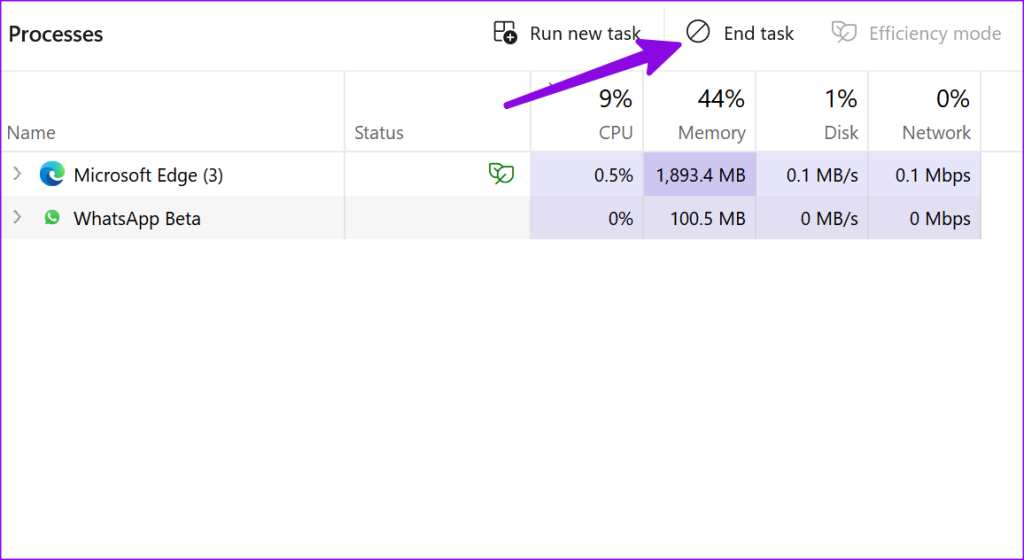
Try opening WhatsApp again on your PC.
2. Log Out and Login Again on WhatsApp
If WhatsApp can’t verify your account, it may not open on your PC. You can log out from your WhatsApp account and try again.
Step 1: Open WhatsApp on your phone.
Step 2: Tap the three-dot menu in the top-right corner and select Linked devices.


Step 3: Select the Windows version and tap Log out.


iPhone users can find the same from Settings > Linked Devices menu. Now, open WhatsApp on the PC and link your phone again. It should work as expected.
3. Use Internet Troubleshooter
If you have trouble with the internet connection on your PC, you only notice the loading indicator when using the WhatsApp desktop app. You can connect to a robust Wi-Fi network or establish an Etherset to avoid such problems. If the issue persists, use the built-in internet troubleshooter.
Step 1: Open the Settings app on your Windows PC (Use the Windows + I keys).
Step 2: Navigate to System > Troubleshoot > Other troubleshooters menu.

Step 3: Run the Network & Internet troubleshooter and follow the on-screen instructions.

If Wi-Fi isn’t working on Windows, read our dedicated post to fix the issue.
4. Run WhatsApp at Login
You can launch WhatsApp at Windows login and have it ready to serve when you switch on the desktop. Here’s what you need to do.
Step 1: Press the Windows + I keys to launch Settings.
Step 2: Go to Apps > Startup apps menu.

Step 3: Enable the toggle beside WhatsApp.

5. Give Relevant Permission to WhatsApp
WhatsApp may act up due to a lack of relevant permissions on the desktop. You should enable the microphone, location, notifications, and other permissions to work as expected.
Step 1: Open Windows Settings and go to System > Notifications menu.
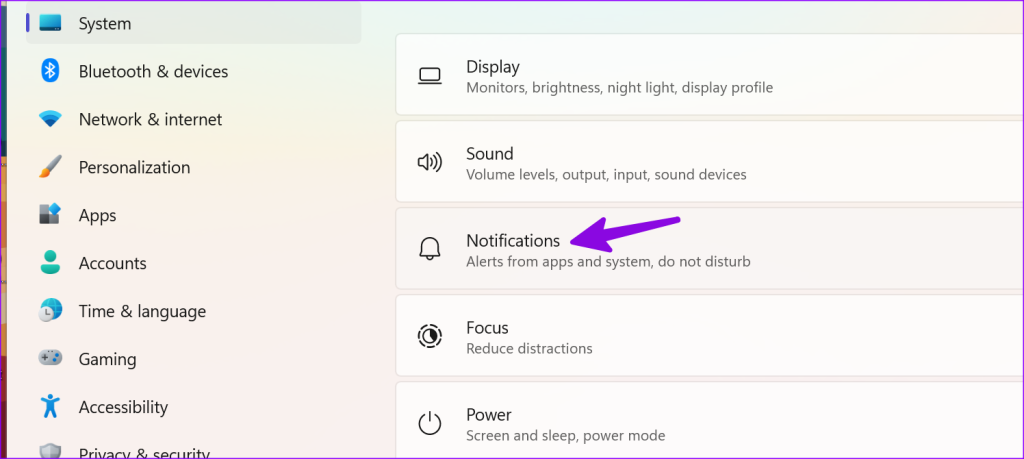
Step 2: Enable the Notifications toggle beside WhatsApp.

Step 3: Navigate to Apps > Installed Apps menu.
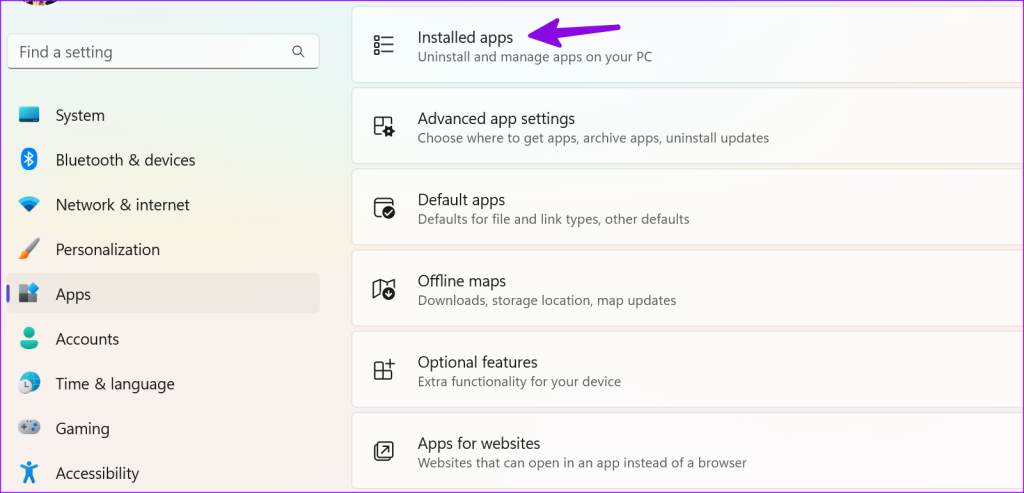
Step 4: Scroll to WhatsApp and click the three-dot menu beside it. Open Advanced options.
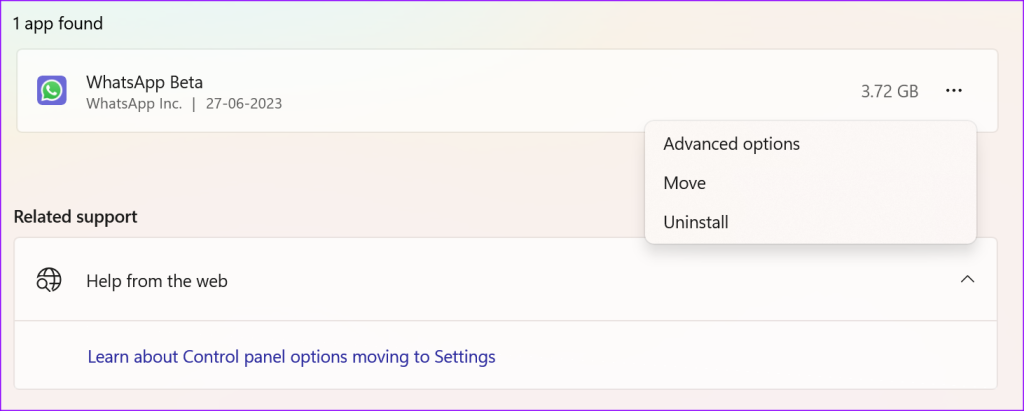
Step 5: Enable the Camera, Microphone, Contacts, and Location toggle.

Now, use the first trick to force close WhatsApp and try opening it again.
6. Repair WhatsApp
Microsoft allows you to repair installed apps on the PC from the Advanced options in the Settings menu. Follow the steps below to repair the WhatsApp app.
Step 1: Open the Windows Settings app (Windows + I keys).
Step 2: Navigate to the Apps > Installed apps menu.

Step 3: Scroll down to WhatsApp and select Advanced options.

Step 4: Under the Reset menu, select Repair and let Windows handle the troubleshooting.

The app’s data won’t be affected here.
7. Reset WhatsApp
If WhatsApp is still not opening on your PC, take this extreme step to fix the issue. We had to mention it as extreme as the process deletes all the data from the app. You must set up a WhatsApp account from scratch on the PC.
Step 1: Go to Windows Settings > Apps > Installed Apps menu.
Step 2: Click the three-dot menu beside WhatsApp and select Advanced options.

Step 3: Select the Reset button under the Reset menu.

The option deletes all the app data. You need to log in to your account again.
8. Update WhatsApp Desktop
Are you using an outdated WhatsApp app on Windows? You may face issues with opening such apps on a PC. You need to open the Microsoft Store and go to the Library menu. Install any pending WhatsApp updates and open it without any issues.
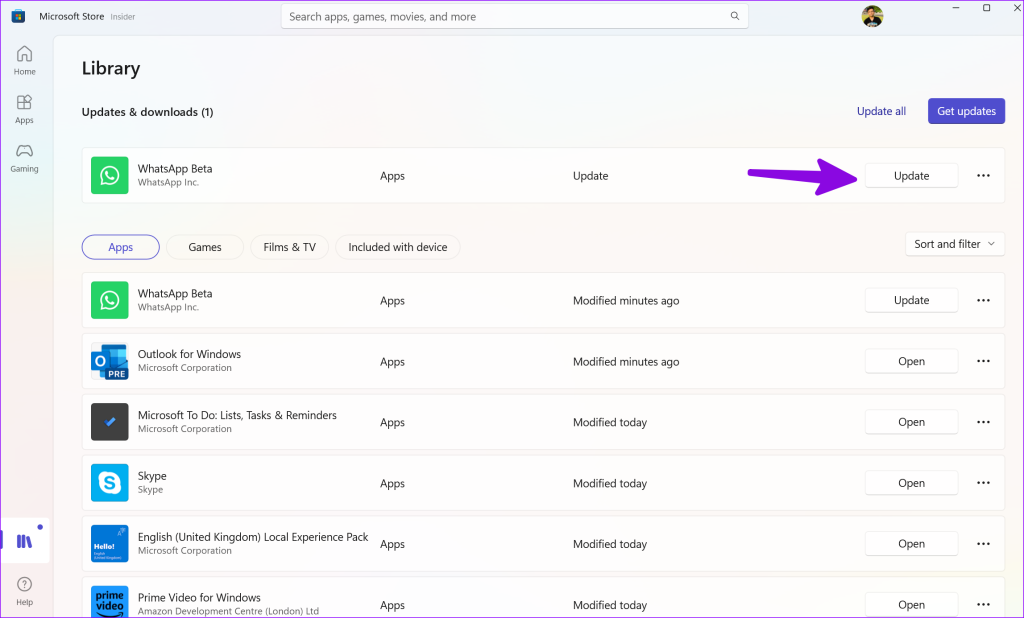
9. Reinstall WhatsApp
Is the WhatsApp desktop still not opening on your PC? It’s time to reinstall the app. The company doesn’t delete your messages, conversations, or media when you clear the app data.
Step 1: Launch Windows Settings and head to Apps > Installed Apps menu.
Step 2: Click the more menu beside WhatsApp and select Uninstall. Confirm your decision.
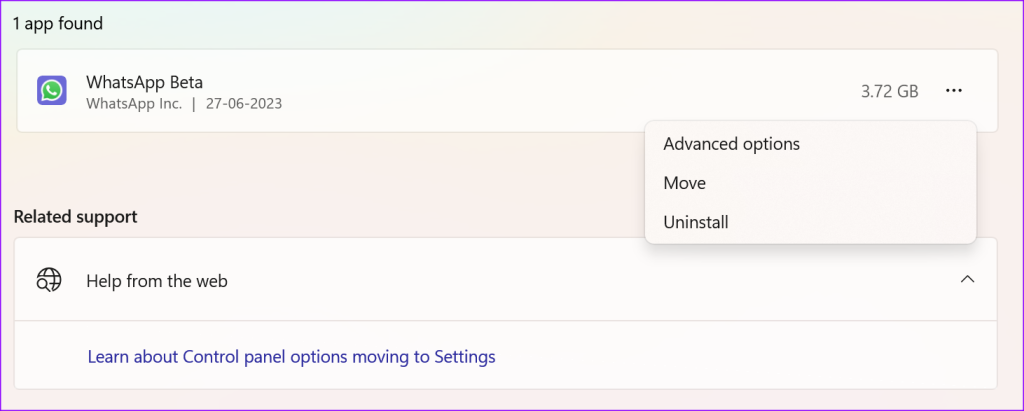
Download WhatsApp from the Microsoft Store and open it to connect your account.
10. Try WhatsApp Beta
WhatsApp offers a beta version that allows users to try new features before releasing it to the public. If the stable app isn’t opening on Windows, try installing the beta version using the link below.
11. Use WhatsApp Web
If you have frequent issues with the WhatsApp desktop app, consider using the WhatsApp web.
WhatsApp web is safe to use and equally capable with all the features such as gifs, stickers, starred messages, pinned conversion, native notifications via the browser, and more. When you complete setting up WhatsApp Web, the service asks you to enable notifications. Ensure to hit Allow to receive instant message alerts on the desk.
Start Using WhatsApp on Desktop
WhatsApp is a vital communication tool for millions out there. It’s the default way to stay in touch with friends and family for the most. WhatsApp not opening on the PC can force you to look for alternatives. Before you do that, use the tricks above and fix the issue.
Was this helpful?
Last updated on 19 March, 2024
1 Comment
Leave a Reply
The article above may contain affiliate links which help support Guiding Tech. The content remains unbiased and authentic and will never affect our editorial integrity.

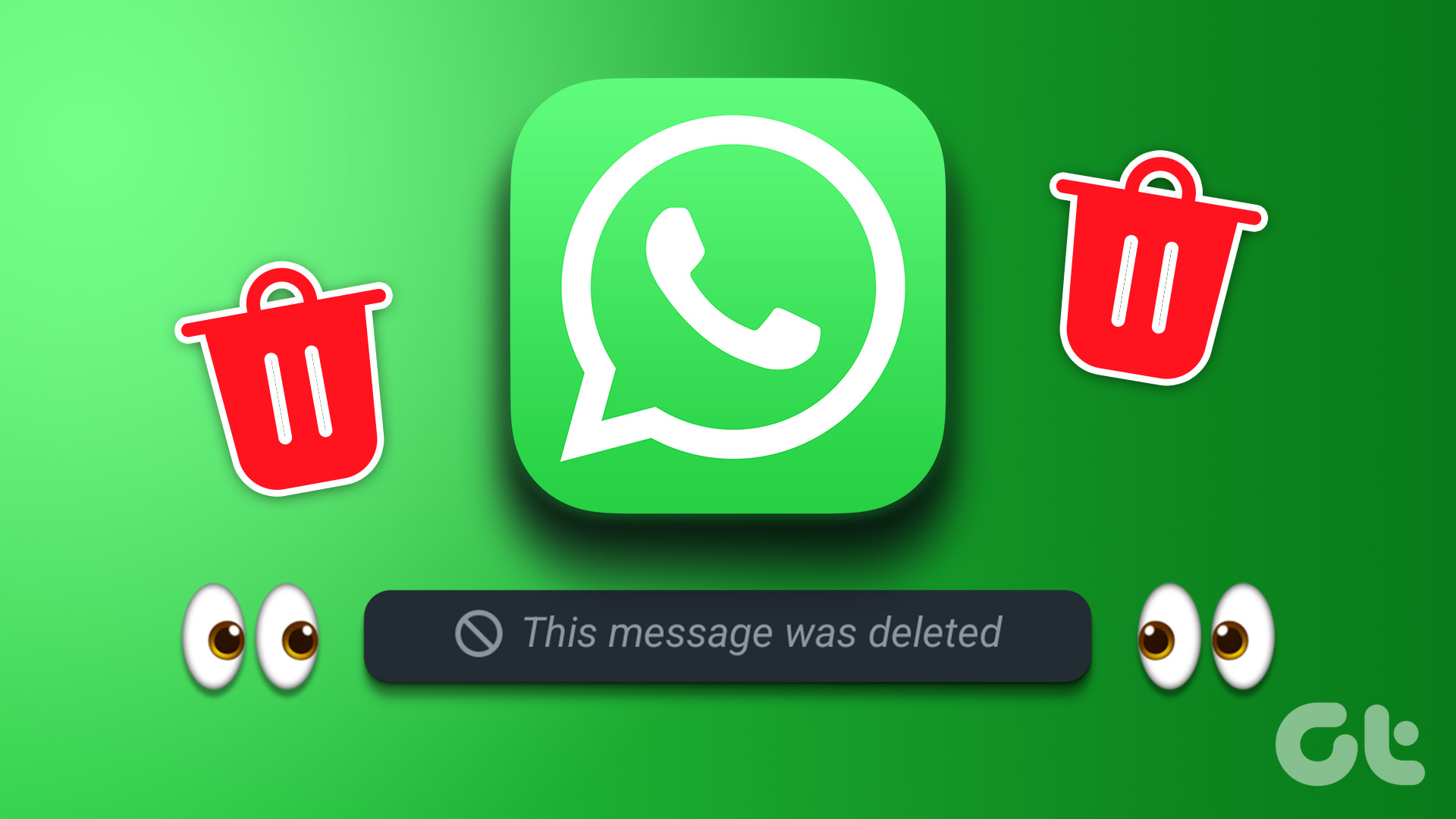




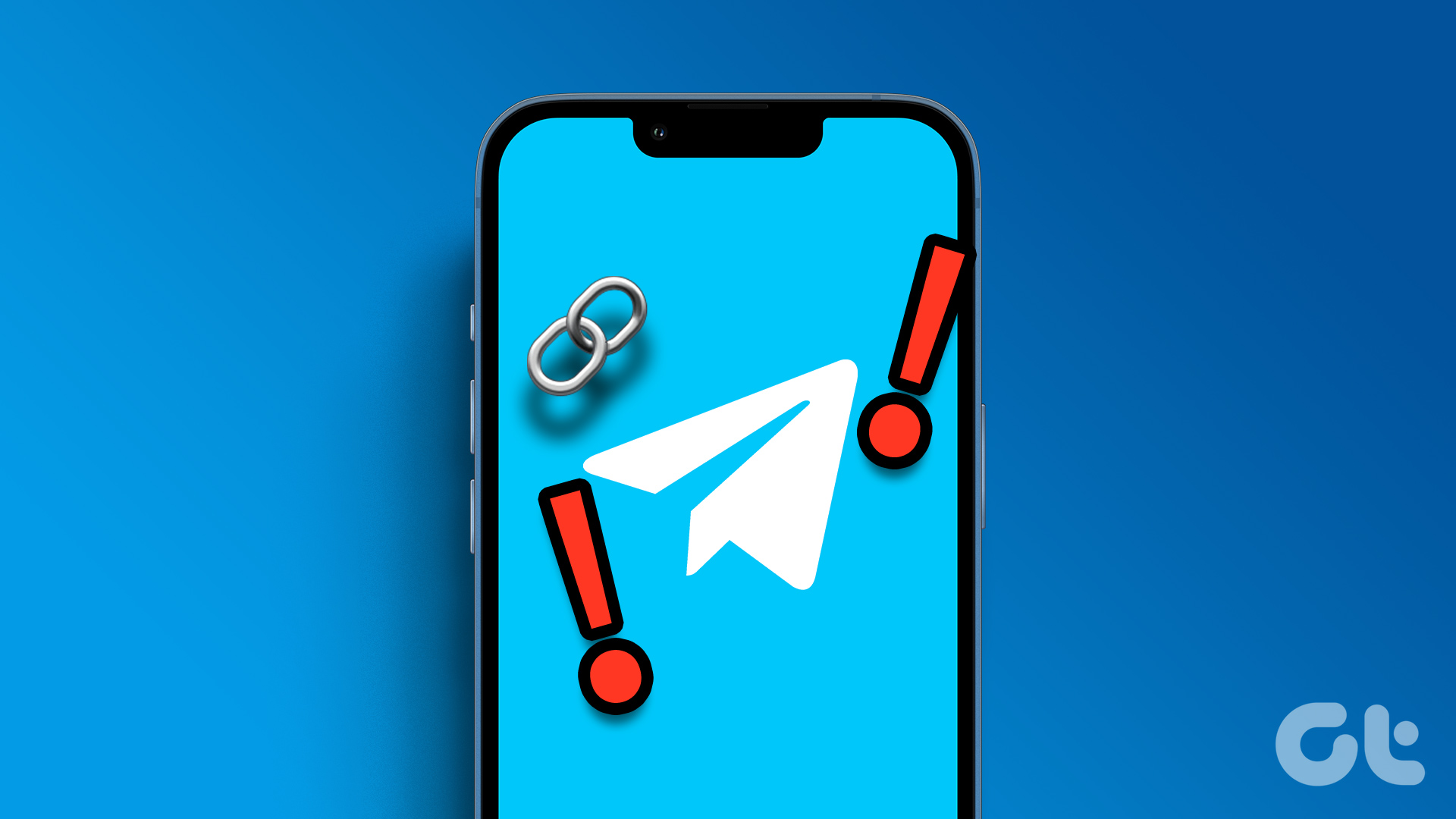



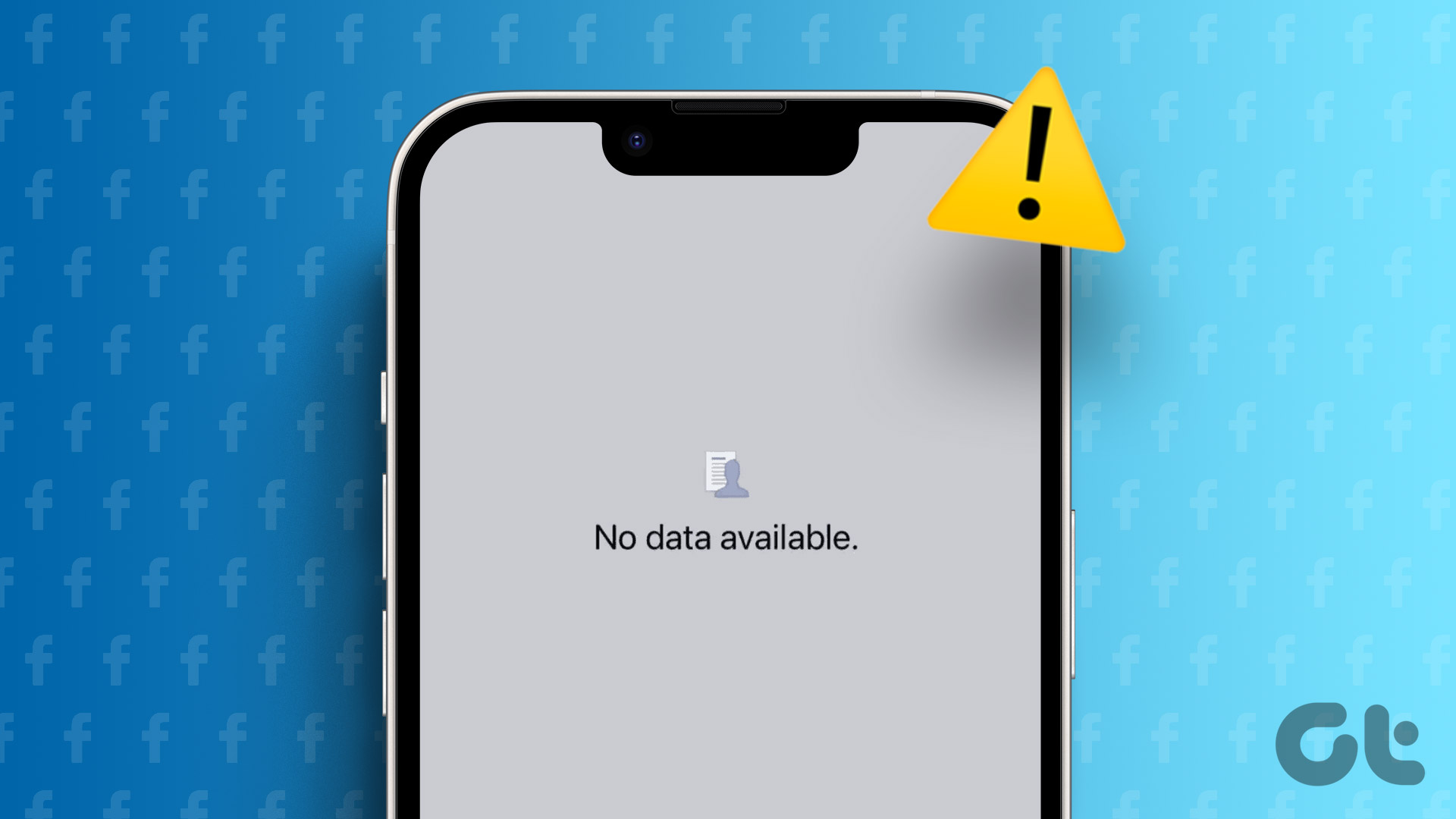
What ‘reset menu’? How do I get there?